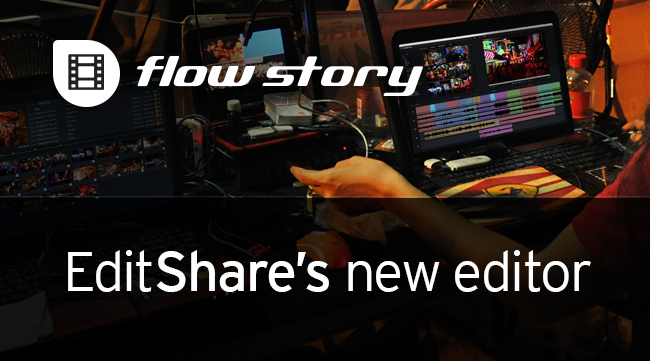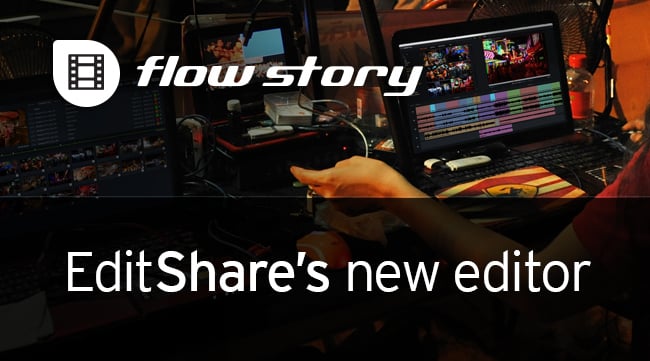
 Editshare's new editor: Going with the flow...
Editshare's new editor: Going with the flow...
EditShare's new editor has a new face on some powerful established technology. And you can use it anywhere, even with live TV.
In case you haven’t come across it before, “Flow” is EditShare’s Media Asset Management System (MAM), and it’s already powerful, with logging, browsing, transcoding and all the smart stuff needed to protect busy users from the complexity of modern media management, with the idea being that they can just get on with their creative work.
And it’s in this creative zone that the new Flow application, called Flow Story, really changes things.
EditShare’s being a little coy by calling Flow Story a “content creation application”. Because what it actually is, is a powerful non linear editor, with a simple to use interface, that is equally at home with full resolution media, or working remotely with automatically generated proxies from the Flow ecosystem.
What does this mean in practice?
It’s no secret that EditShare has all the editing goodness that is Lightworks available to any of its products. We’re guessing that there’s a lot of Lightworks under the hood.
But instead of Lightwork’s uniquely styled interface, Flow Story is simplified and streamlined. It’s designed for anyone busy on a production that wants to pre-assemble content for delivery further down the stream.
Physically, it’s a desktop (or laptop!) application. But it is equally at home working with local full resolution material or proxy versions that exist on a Flow server. This is an editor that can work with remote material as if it were local, and users barely have to think about the technology that’s allowing all this to happen.
This is an example of a “Private Cloud”. If you’re working for a facility or production company with an Editshare/Flow system, then it doesn’t matter whether you’re in the building or across the world, you can fire up Flow Story, and begin editing. You can do the same if you’ve got your own material locally that needs uploading.
The interface is very simply divided into Logging, Editing and Effects. Every time you change a clip - either its “in" and “out" points or cues, the metadata is tracked by Flow and becomes part of the Flow database.
At any stage, you can hand your project over to someone else, anywhere in the world.
Despite its simplicity, Flow Story has deep features. For example, it supports hundreds of formats, from ProRes and DnXHD, through AVC-Intra and XDCAM as well as RED R3D, XAVC, Cinema DNG and DPX. It supports resolutions up to 4K and beyond.
You can input and output almost any format locally and you have the option to switch between hi-res or proxy media on the fly.
Flow Story has a built-in voice-over mode that defaults to whichever microphone you have on your system, automatically selecting a new audio track when you go into record.
You can “Edit While Capture”: even during a live broadcast you can start editing on the material as soon as it comes in.
There’s real time collaboration with anyone else working on an Editshare network. All aspects of the project are shared.
There’s very strong integration with other NLEs including Avid Media Composer, Adobe Premiere, Davinci Resolve and Avid ProTools. There’s powerful AAF and XML interchange for easy round trips with other software.
Importantly, you can also work offline. Once you’re re-established your internet connection, your project will be synchronised with the Flow server.
This seems to us to be an interesting development. Not everyone wants to trust their work to the cloud, but often it’s still essential to be able to work remotely. We suspect that doing it this way, you’ll not only save on the cost of online storage, uploads and downloads; there’s the reassurance of knowing that the server is on your territory.
We’re interested to see how the Story develops...
(Flow Story is slated for release in Q3 2016, and is on show at EditShare’s booth at NAB 2016)
You can find out more about Flow Story here.
Tags: Post & VFX


Comments